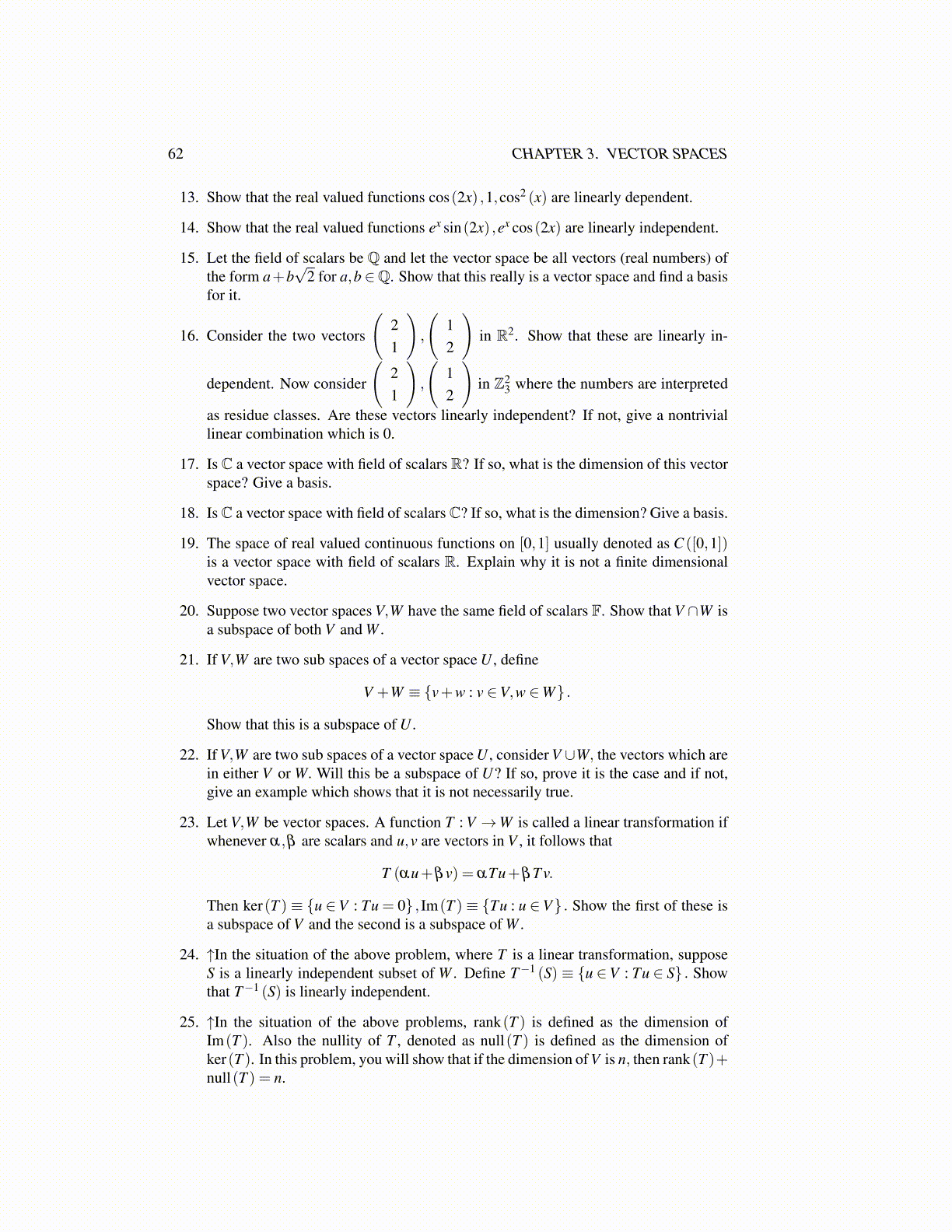
62 CHAPTER 3. VECTOR SPACES
13. Show that the real valued functions cos(2x) ,1,cos2 (x) are linearly dependent.
14. Show that the real valued functions ex sin(2x) ,ex cos(2x) are linearly independent.
15. Let the field of scalars be Q and let the vector space be all vectors (real numbers) ofthe form a+b
√2 for a,b ∈Q. Show that this really is a vector space and find a basis
for it.
16. Consider the two vectors
(21
),
(12
)in R2. Show that these are linearly in-
dependent. Now consider
(21
),
(12
)in Z2
3 where the numbers are interpreted
as residue classes. Are these vectors linearly independent? If not, give a nontriviallinear combination which is 0.
17. Is C a vector space with field of scalars R? If so, what is the dimension of this vectorspace? Give a basis.
18. Is C a vector space with field of scalars C? If so, what is the dimension? Give a basis.
19. The space of real valued continuous functions on [0,1] usually denoted as C ([0,1])is a vector space with field of scalars R. Explain why it is not a finite dimensionalvector space.
20. Suppose two vector spaces V,W have the same field of scalars F. Show that V ∩W isa subspace of both V and W .
21. If V,W are two sub spaces of a vector space U , define
V +W ≡ {v+w : v ∈V,w ∈W} .
Show that this is a subspace of U .
22. If V,W are two sub spaces of a vector space U , consider V ∪W, the vectors which arein either V or W. Will this be a subspace of U? If so, prove it is the case and if not,give an example which shows that it is not necessarily true.
23. Let V,W be vector spaces. A function T : V →W is called a linear transformation ifwhenever α,β are scalars and u,v are vectors in V , it follows that
T (αu+βv) = αTu+βT v.
Then ker(T ) ≡ {u ∈V : Tu = 0} , Im(T ) ≡ {Tu : u ∈V} . Show the first of these isa subspace of V and the second is a subspace of W .
24. ↑In the situation of the above problem, where T is a linear transformation, supposeS is a linearly independent subset of W . Define T−1 (S) ≡ {u ∈V : Tu ∈ S} . Showthat T−1 (S) is linearly independent.
25. ↑In the situation of the above problems, rank(T ) is defined as the dimension ofIm(T ). Also the nullity of T , denoted as null(T ) is defined as the dimension ofker(T ). In this problem, you will show that if the dimension of V is n, then rank(T )+null(T ) = n.